Your Online Friendship Centre
Exit Site
Your Online Friendship Centre
Most of us are familiar with the names Jacques Cartier, Laura Secord, Lucy Maud Montgomery and Terry Fox. These figures were important in Canadian history and are prevalent in textbooks and in history lessons at school. But the history of this land wasn’t just made by settlers; Indigenous women have been shaking things up for generations and have played significant roles in Canadian history, even if we don’t know their names. It’s time to start learning them.
Kenojuak Ashevak (1927-2013)
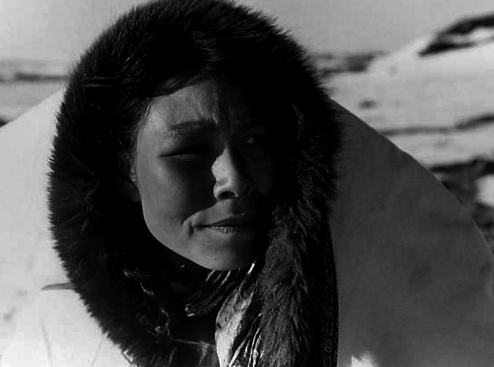
Kenojuak Ashevak was born on the southern coast of Baffin Island and became one of the first Inuit women from Cape Dorset to draw, later becoming a notable and celebrated artist. She used a number of different tools to create art including graphite, felt tip pens, coloured pencils, paints watercolours and acrylics. She also created soapstone carvings and stonecut prints. Her husband, Johnniebo Ashevak, was also an artist and the two often worked together until he died in 1972.
Ashevak is considered by many to be the most renowned Inuit artist ever. Her work has been on Canadian stamps and coins and her prints Enchanted Owl and Rabbit Eating Seaweed have become recognized pieces of art. Ashevak was elected a member of the Royal Academy of Arts in 1974, appointed a Companion of the Order of Canada in 1982, received honorary doctorates from Queen’s University and the University of Toronto and was inducted into Canada’s Walk of Fame in 2001.
Mary Two-Axe Earley (1911-1996)
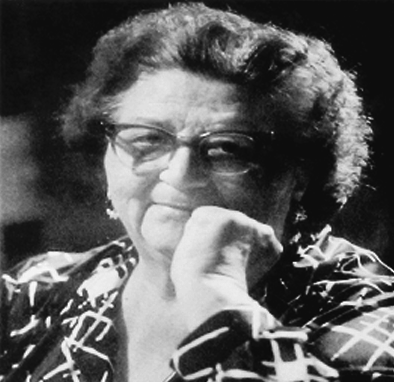
Mary Two-Axe was a Mohawk woman born on the Kahnawake reserve in Quebec. At the age of 18 she moved to New York City where she met Edward Earley, an Irish-American who she eventually married. But her marriage meant that she lost her Indian status and could not longer live on her home reserve or participate in the life of her community.
But Two-Axe Earley wouldn’t stand for this. She began to advocate for the rights of Indigenous women and for changes to the Indian Act. In 1968 she established the Equal Rights for Indian Women association, a provincial organization that fought for these changes. In spite of push back from many sides (even from male First Nations leaders who feared letting women marry non-Indians would erode their culture) and through hardships like the death of her husband, Two-Axe Earley continued to push on. In 1985 Parliament passed Bill C-31, which amended the Indian Act, removing the discriminatory measure that took away women’s Indian status and also restored status to thousands of First Nations women. Two-Axe Earley was the first woman to regain her Indian status in a ceremony with David Crombie, the Minister for Indian Affairs and Northern Development, in 1985.
Angela Sidney (1902-1991)
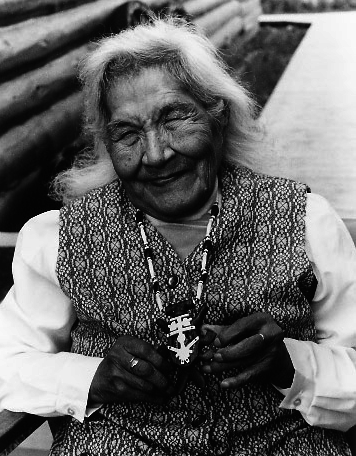
Angela Sidney was a Tagish woman who spent much of her life preserving the stories of her people. She enjoyed hearing these old stories from her parents and other relatives and to ensure Tagish dances, stories and language continued, she began to teach these traditions to children. She assisted linguists and anthropologists with research to keep the Tagish language alive and was involved in recording oral history and publishing books that contained songs, stories and Tagish place names.
In 1986, Sidney became the first woman from the Yukon to receive the Order of Canada for her important work preserving Tagish language and culture.
Mikak (1740-1795)
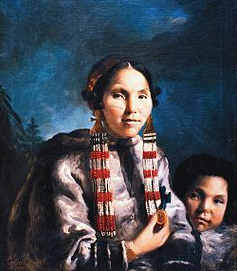
Mikak was born in Labrador and played an important role in creating friendly relations between European traders and Inuit people. She is believed to be the first Inuk to have travelled to Europe and back to North America (others who made the voyage to Europe died from diseases like smallpox before returning) and is one the earliest Inuit to be mentioned in historical documents.
She and other Inuit were taken prisoner by an English naval officer, Francis Lucas, and was later brought to London. There, she impressed those she met, including British royalty. Documents show her as being charismatic and intelligent. She learned some English and won people over with her charm. When she returned home she helped missionaries establish the first mission post in Labrador.
Nora Bernard (1935-2007)
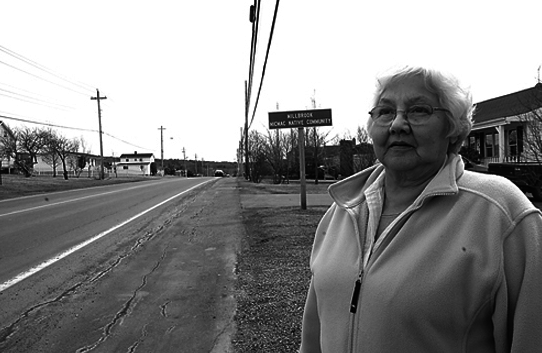
Nora Bernard was a Mi’kmaq activist who fought for compensation for residential school survivors. As a child Bernard spent 5 years in the Shubenacadie Indian Residential School, which drove her to bring a lawsuit against the government for the mistreatment she experienced there. In the school, Bernard defended her siblings and other children when she saw them being treated badly and would be beaten for her efforts.
In 1995, Bernard founded an organization that represented survivors of Shubenacadie. Their class action suit soon became known across the country and other groups and associations joined them, forming one national lawsuit. Bernard wasn’t able to see the outcome of all of her hard work. In 2007, not long after thousands of survivors were to be sent compensation cheques, she was killed by her grandson.
Jean Cuthand Goodwill (1928-1997)
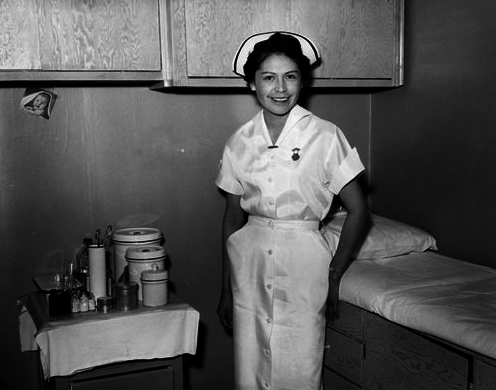
Jean Cuthand Goodwill, a Cree woman from the Little Pine First Nation, was the first Indigenous person in Saskatchewan and one of the first in Canada to become a registered nurse. When Goodwill was young she contracted tuberculosis and spent a lot of time in and around hospitals and medical workers, which influenced her to become a nurse. In the earlier part of her career, Goodwill worked in rural Saskatchewan and also Bermuda, focusing on helping people in need.
Goodwill’s interest in political and community issues grew when she returned to Canada. She helped found the Aboriginal Nurses Association of Canada and served as its president from 1983 to 1990. She was the first Indigenous women to serve as a special advisor to the minister of National Health and Welfare in the federal government and also worked with the Department of Indian Affairs and Northern Development. She taught at the University of Regina, was a Canadian Public Health Association board member and was served a term as president of the Canadian Society for Circumpolar Health.